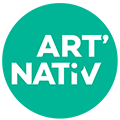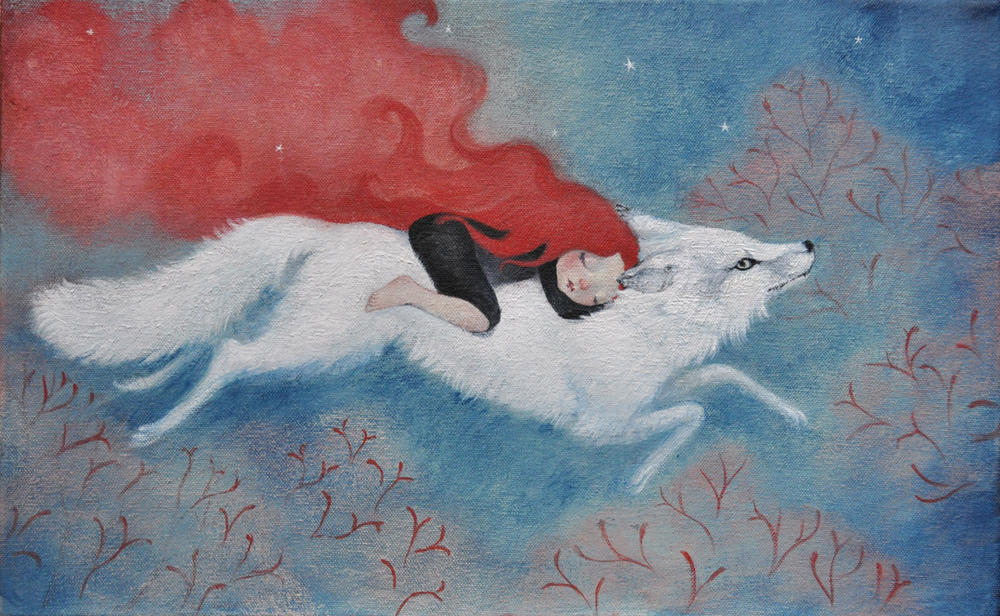CONFERINTA EST EUROPEANĂ DE SĂNĂTATE MINTALĂ “IN AND OUT OF YOUR MIND” Sibiu|România 26-29 Septembrie 2019
Imagine. Simbol. Semn
Încă din timpurile paleoliticului, oamenii au creat configurații care servesc drept echivalente pentru procesele de viață. Numim acele configurații opere de artă.
Artele se referă la teoria și expresia fizică a creativității găsite în culturile și societățile umane. Principalele componente ale artelor includ literatura, artele spectacolului și artele vizuale.
De la picturile rupestre preistorice până în zilele moderne, arta servește ca un vas pentru povestirea și transmiterea relației omenirii cu mediul înconjurător.
3rd EASTERN EUROPEAN CONFERENCE OF MENTAL HEALTH “IN AND OUT OF YOUR MIND” Sibiu|România 26-29 September 2019
Image. Symbol. sign
Since Palaeolithic times, humans have created configurations that serve as equivalents for the life processes. We call those configurations works of art.
The arts refer to the theory and physical expression of creativity found in human cultures and societies. Major constituents of the arts include literature, performing arts and visual arts.
From prehistoric cave paintings to modern days, art serves as a vessel for storytelling and conveying humankind’s relationship with the environment.

Se pare că „producerea/realizarea” semnelor face parte din repertoriul uman.” C.Henshilwood -directorul Centrului de cercetare a comportamentului primilor umanoizi la Universitatea din Bergen.
El Greco spunea „Arta este peste tot pe unde te uiți”. Plecând de la această afirmație, cu care sunt într-u totul de acord, îmi vine în minte bogația DIVERSITĂȚII. Fie ea legată de obiceiurile locurilor, portul popular, mâncăruri regionale, felul în care ne decorăm casa, curțile sau pe noi înșine; culoarea pielii, religia, preferințele personale toate acestea fiind esențiale în construirea personala a fiecăruia și totodată în construirea comună a omenirii.
„Trebuie să ne oferim reciproc spațiul pentru a crește, pentru a fi noi înșine, pentru a ne exercita DIVERSITATEA. Trebuie să ne oferim un spațiu reciproc, pentru ca noi să oferim și să primim lucruri atât de frumoase precum idei, deschidere, demnitate, bucurie, vindecare și includere.” Max de Pree
“It seems to be part of the human repertoire of producing signs.” C.Henshilwood -director of the Centre for Early Sapiens Behavior at the University of Bergen
El Greco said „Art is everywhere you look for it.” Starting from this statement that I totally agree with, it comes to my mind the richness of DIVERSITY. Be it connected to local customs, folkloric clothing, regional food, how we decorate our house or ourselves, the colour of the skin, religion, personal preferences, all these are essential for the personal constituency and formation of each and everyone of us, as well as in commonly building up mankind.
“We need to give each other the space to grow, to be ourselves, to exercise our DIVERSITY We need to give each other space so that we may both give and receive such beautiful things as ideas, openness, dignity, joy, healing, and inclusion.” Max de Pree
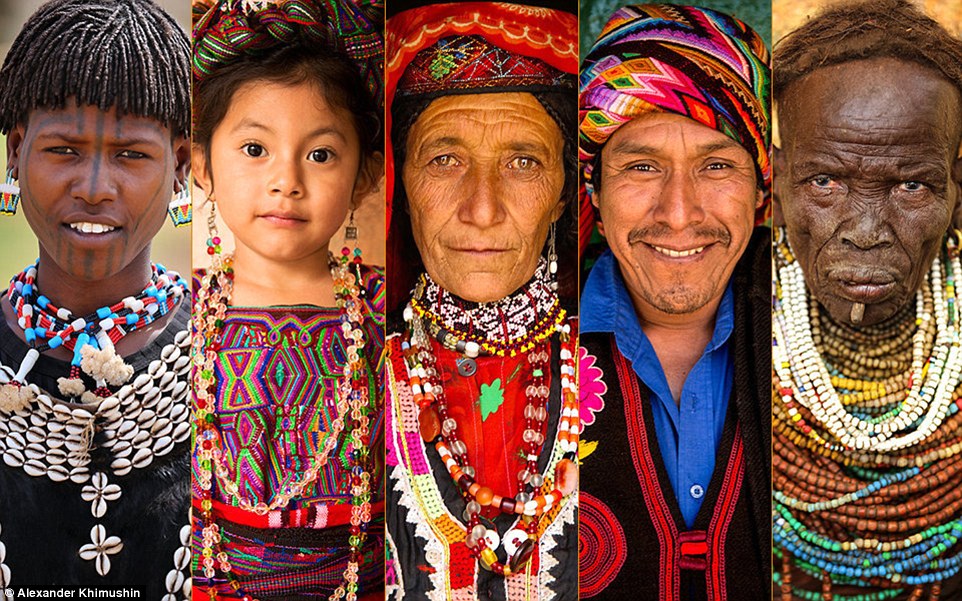
Si acum dacă tot am amintit de crearea unui SPAȚIU oportun dezvoltării, este un moment potrivit să abordăm o manifestare universală, structurată, originală și complexă și anume procesul formulației (Formulation* = memorie organică).
Formularea este de fapt ceva ce fiecare dintre noi experimentează organic, copii fiind (mici-la începuturi). Nu dispare niciodată, trebuie doar să fie redescoperită și conectată. Acest mod ludic de a crea ceva are un repertoriu unic de reguli și imagini; este un proces continuu care nu derivă niciodată în artă.
După cum puteți observa în tabelul de mai jos, într-o primă etapă apar manifestările grafice arhaice, urmate apoi de apariția figurilor primare, transformate în imagini-obiect cu ajutorul cărora se pot construi ulterior imagini reprezentative “uitate”.
Fiecare dintre noi suntem un vas care păstrează și arhivează o multitudine de capacități expresive care abia așteaptă să fie descoperite, să înfloreacă. Pentru ca acest lucru să fie posibil este nevoie să existe un echilibru între CERINȚĂ și LIBERTATEA DE EXPRIMARE. Când acest punct este atins “formulația” se poate manifesta, iar acest proces (experienta artistică) duce la dezvoltarea energiilor omului și transformarea acestuia într-o ființă echilibrată.
*Formulația este studiată la Institutul de Cercetare a Semiologiei Expresiei in Paris de catre Arno Stern. Acesta a cercetat 70 de semne. In tabel puteti sa observati cateva dintre aceste semne.
Related to the building up of a development encouraging SPACE, it is worthy to introduce and approach a universal, structured, original and complex manifestation; that is, the Formulation process. (FORMULATION*= organic memory)
Formulation is in fact something that each of us organically experiences as a toddler. It never disappears, just needs to be rediscovered and tapped into. This playful way of creating something has a unique repertoire of rules and images; it is a continuous process that never derives into art.
As you can observe in this table, archaic graphic manifestations appear in a first stage, followed by the apparition of primary figures, transformed into images-object, with which subsequently ”forgotten” representative images could be built up.
Each human being is a vessel that keeps and archives a multitude of expressive capacities, hardly waiting to be discovered and flourish. For this to be possible, it is necessary to acquire a balance between the (INNER) DEMAND and FREEDOM OF EXPRESSION. When this point is reached, the ”formulation” can express itself, and the process leads to the development of human energies and transformation into a well-balanced, harmonious and integrated into the „bigger picture” being.
*Formulation is studied at the Research Institute for the Semiology of Expression in Paris by Arno Stern who documented 70 signs. Here’s a representation of some of them.
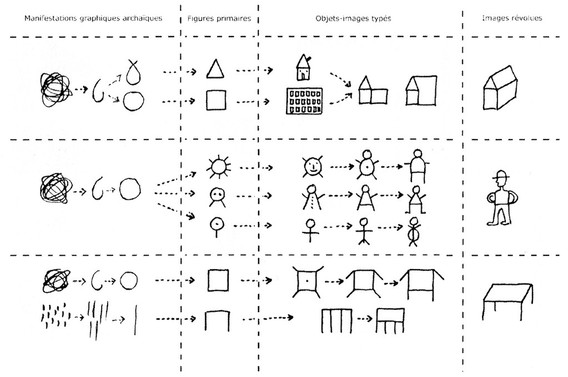
Trăirea artei
Carl Gustav Jung, filozof și psiholog innovator al secolului trecut a scris despre importanța experienței artistice (art experience); aceasta fiind esențială în cunoașterea de sine. Acest proces interior intermediat prin artă fiind capabil să aducă “vindecare”. În Amintiri, Vise și reflecții (Jung 1973) și-a povestit viața, ca o încercare de a se întelege pe sine prin intermediul imaginilor și al procesului artistic. Chiar dacă acesta credea în puterea activatoare a artei și în abilitatea acesteia de a ilumina și a transforma, pentru el nu era întotdeauna clar dacă calea pe care el o urma era arta, însă îi era destul de clar că PROCESUL ARTISTIC în sine, îi aducea claritate în drumul său.
El a scris:
În timp ce scriam aceste fantezii, m-am întrebat odată: „Ce fac eu cu adevărat? Cu siguranță acest lucru nu are nicio legătură cu știința. Dar atunci ce este? ”Unde o voce din interiorul meu spunea:„ Este arta ”.
… Am raspuns empatic acestei voci, că fanteziile mele nu au nicio legătură cu arta și am simțit o rezistență interioară mare. Nu s-a mai auzit niciun fel de voce și am continuat să scriu. Apoi a urmat următoarea reflectare și din nou aceeași afirmație; „Aceasta este arta. De această dată am fost present in interiorul meu și am spus: „Nu, nu este artă! Dimpotrivă, este natura ”și m-am pregătit pentru un argument. [Nu s-a produs niciun argument] (Jung 1989, pp185-186)
Nici un argument nu a aparut deoarece arta și natura merg mână în mână. Precum însăși natura, noi suntem creatori: suntem facuți să fim artiști, fie vorba de a construii unelte, a cânta un cântec sau de a pro crea. Dacă medicina se preocupă de forțele naturii, ARTA poate fi o cale de a aborda boala.
Ca și practicanți ai artelor expresive, asistenți, terapeuți, doctori, asistenți sociali, lucrători hospice sau artiști, cu toții avem oportunitatea de a aduce și mai multă artă în sistemul medical, pentru a sprijinii nenumărații pacienți în a-și construii o cale către ÎNTREGIRE, și pentru a trezi propriul potențial creativ.
Art experience
Carl Gustav Jung, philosopher and psychoanalyst, innovator of the previous century wrote about the importance of the art experience being crucial in the self-knowing and realisation process, as this inner process, art-intermediated, is capable to bring the healing. In „Memories, Dreams and Reflections” Jung recalled his life as a trial of understanding himself through images and the art process. Although he believed in the activating power of art and its illuminating and transforming ability, he had his doubtful moments whether the way he pursued was truly art, while being thoroughly clear that the ARTISTIC PROCESS in itself brought clarity on his way.
He wrote:
While I was writing down these fantasies, I once asked myself, “What am I really doing? Certainly this has nothing to do with science. But then what is it?” Where upon a voice within me said, “It is art”.
… I said very emphatically to this voice that my fantasies had nothing to do with art, and I felt a great inner resistance. No voice came through, however, and I kept on writing. Then came the next assault, and again the same assertion; “That is art. This time I caught her and said, “No it is not art! On the contrary it is nature,” and prepared myself for an argument. [No argument occurred] (Jung 1989, pp185-186)
As art and nature go hand in hand, I believe an argument would not have found its place there. Like nature itself, we are creators: we are made to be artists – be it in developing tools, singing a song or in pro-creating. Provided that medicine directed its attention towards understanding natural forces and principles, it could include Art as a way of approaching illness, as both medicine and art work towards the same goal: the restoration of the human being as a whole, thus enabling it to fully manifest its creative potential.
As workers with expressive arts, be it therapists, artists, social workers, hospice workers, doctors or nurses, we all have the chance to bring art into the medical system to support the countless clients and sufferers to build up a way to recover and become a whole by waking up their own creative potential.
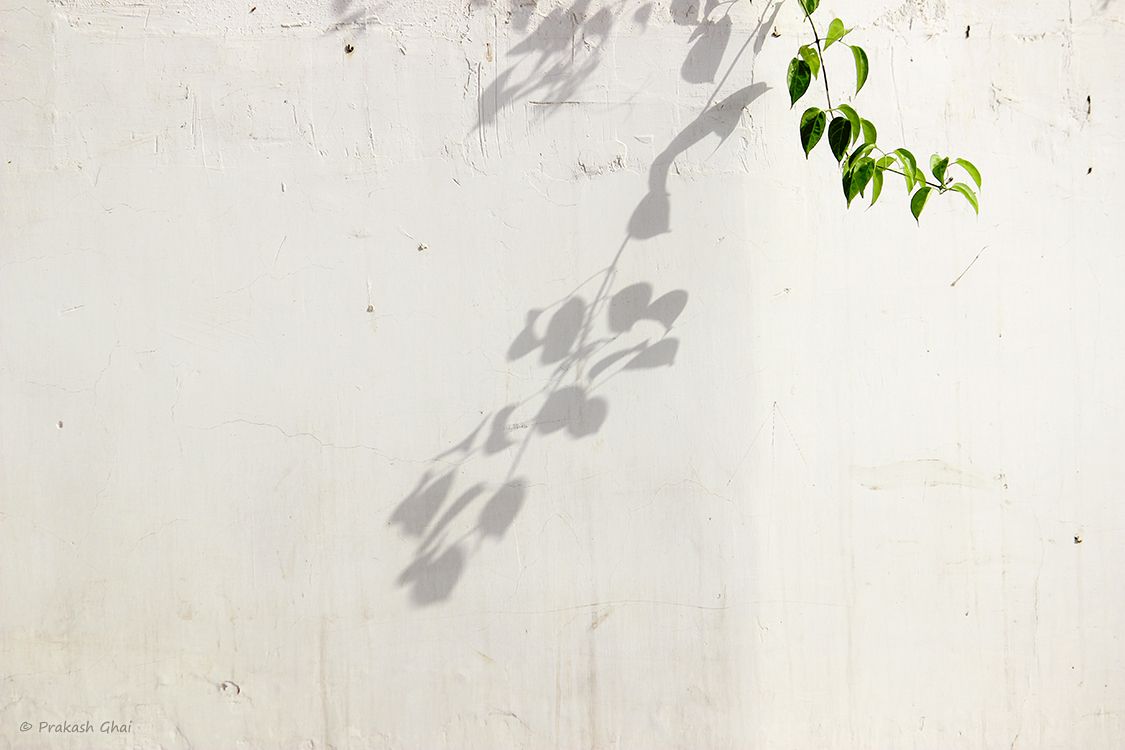
Auto-cunoașterea: dansul dintre lumea interioară și cea exterioară
Artele expressive sunt în primul rând un proces de auto-cunoaștere, de dezvoltare personală care este terapeutic deoarece conduce clientul către SĂNĂTATE. Binele, sănătatea, întregirea… sunt strâns legate cu o stare de a ne simții compleți. Dacă ne lipsește o parte din cunoștiințe, atunci nu suntem compleți în întelegere. De aceea, când dorim să înțelegem o situație, fie ea legată de relații (parteneri, copii, servici etc) sau despre o anumită boală căutăm informații care să ne aducă înțelegere și astfel simțim acea stare de liniște tradusă în ÎNTREGIRE.
Cunoașterea și dezvoltarea personală sunt bineînțeles strâns relaționate. Scopul dezvoltării noastre fiind acela de a ne aduce cunoaștere. Astfel atunci când suntem implicați în procesul auto-cunoașterii înmagazinăm informații din exterior, le trecem prin filtrul interior pentru ca ulterior să căpătăm o înțelegere proprie a ceea ce am învățat. Acest proces profund produce bineînțeles schimbari interioare. Astfel lucrul cu noi înșine fiind o împletire a celor 2 tărâmuri, interior si exterior.
În artă, imaginile interioare întâlnesc hartia și culoarea, iar muzica interioară devine sunetul unei orchestre simfonice. Un dans continuu între imaginile interioare și forma exterioară, între creație și expresie.
Arta este UN RĂSPUNS care reușește să „mute” clientul dintr-un punct în altul, aducând claritate și conectare între sentimente, gânduri, materiale și insight-uri. Arta reușește să exprime ceea ce de multe ori nu este posibil prin limbajul verbal. Conectează artistul cu audiența sa, sau comunitatea, iar în cazul artelor expresive, conectează clientul cu terapeutul, deoarece împreună au fost martorii creării și prezenței lucrării realizate.
Arta mai are o funcție foarte specială în ceea ce privește lumea noastră interioară: permite exprimarea unei părți inconștiente prin procesul artistic, această parte devenind vizibilă prin intermediul imaginilor. Imaginile devenind cunoștiințe în lumina CONȘTIENTULUI.
Self-Knowledge: the dance between inner and outer
Expressive arts are at first an educational process that becomes therapeutic as it leads the person towards HEALING. Well being, health, wholeness, entirety … they are closely related to the condition of feeling ourselves complete and accomplished. If we lack in knowledge, then we are not fully complete in understanding – therefore when we want to understand a situation, be it referring to relationships (couple, children, professional etc.) or to a specific illness, we look for information able to bring us closer to UNDERSTANDING the case, thus enabling ourselves to feel that accomplishing, certifying state that it is translated in WHOLENESS.
Knowledge and education are closely related – one should lead to the other, education should lead us to knowledge. As a part of the educational process we store external information, get them through the inner filter in order to get an own understanding of what we learnt. This deep process is of course producing inner changes; thus, in order to acquire knowledge, education should entwine the inner and outer realms.
A disruption, blockage, flaw or lack in understanding the cause and route of the illness leads to an incomplete – therefore not lasting – healing.
Artistically expressed, the internal images meet up with paper and colours, while the inner music becomes and orchestral soundtrack. There is a continuous dance between the inner images and their outer manifestation, between creation and expression.
Art is AN ANSWER that succeeds to ”carry” the person from one point to another, bringing clarity and connection between feelings, thoughts, tools and insights. Art succeeds to express what many times is not possible through verbal communication. It connects the artist with the audience or community; in the case of expressive arts, it connects the client with the therapist, as both are witnessing the creation and presence of the achieved work.
A very special function of art is referring to our inner world or realm: it is capable of engaging our subconscious side, thus enabling us to DEVELOP and EDUCATE. It allows for the expression of the subconscious via the artistic process, making it visible through images; and enables images to become knowledge in the light of the CONSCIOUSSNESS.
Capacitatea transcedentă și transformatoare a artei | Conectarea cu inconștientul prin simboluri
Făcând inconștientul cunoscut, prin crearea de imagini, poate avea loc cunoașterea de sine și integrarea interiorului și exteriorului. Este o experiență transformatoare care atinge toate nivelurile de -a fi -simultan. Imaginile dau voce inconștientului. Acestea pot să conțină mult mai multă informație decât putem noi cuprinde la un moment dat cu mintea noastră rațională.
Să abordezi o foaie albă într-un moment de criză, nu este întodeauna un lucru ușor. E nevoie de curaj. Orice urmă lăsată de client pe foaie reprezintă o asumare a ceea ce este present în interiorul lui în acel moment.
“Mă simt captiv”, “Mă simt pierdută. Sunt speriată”, “Aveam nevoie de prezența părinților”, “E atât de bine să pot desena ca un copil din nou” “sunt singur “. Nu îmi place să pierd controlul”,”e bine să fi susținut”, “Când am devenit femeie?” etc.
SIMBOLURILE pot fi văzute precum o meditație activa. Acestea răsar din locuri profunde, inconștiente, reușind să ofere o FORMĂ inefabilului. Această capacitate fiind un sprijin nemăsurat pentru clienții care se confruntă cu misterele care vin odată cu suferința, boala sau îmbătrânirea. Simbolurile sunt încărcate cu multe sensuri, iar înțelegerea și cunoașterea lor poate risipii misterul, conducând astfel către eliberare, acceptare, și câteodată către abandonare. Puterea simbolurilor nu ar trebui subestimată.
Simboluri sau semne
Simbolurile și semnele funcționează în feluri diferite, iar ințelegerea acestora poate aduce un plus de profunzime în înțelegerea experienței artistice a clienților. Foarte pe scurt, când un simbol apare, clientul poate avea nevoie de mai multe ședințe sau poate doar mai mult timp pentru a reflecta dupa experiența artistică. Semnele nu ar trebui de asemenea subestimate, însă probabil că – clienții dețin deja puterea descifrării propriei lor exprimări simbolice.
Potrivit lui Jung (1973) există diferențe între simboluri și semn. Semnele sunt o simplă abreviere a ceea ce este deja cunoscut. Arată o realitate concretă. În timp ce simbolurile exprimă o realitate dinamică care prin natura lor sunt într-o schimbare continuă. Semnele sunt destul de usor de identificat și sunt explicite. De exemplu pentru un client o inimă poate fi o simplă inimă, sau poate să reprezinte dragostea față de ceva sau cineva. Simbolurile spre deosebire de semne, nu sunt atât de simplu de creat. Ele sunt compuse din material necunoscut și inconștient.
Simbolurile ( spre deosebire de semne) au capacitatea de a conține mai multe sensuri de-o dată, astfel emanând comfort și siguranță celor care se confruntă cu diferite provocări. De exemplu, viața și moartea nu se exclud reciproc într-o lucrare; ele coexistă împreună fără a fi o amenințare, fiind conținută prin intermediul lucrării artistice însăși, și nu de conștiința clientului. Prin intermediul procesului artistic, clientul se poate elibera de greutăți și apăsări și în același timp să fie conștient de acestea. În forma concretă, cu ajutorul culorilor și a hârtiei, cele mai profunde paradoxuri pot să existe fără a crea tumult –în afara clientului.
Art’s transcendent and transformative capacity| Connecting with the unconscious through symbols
By bringing the unknown into consciousness through the creation of images, self-knowledge and the integration of inner and outer can occur. It is a transformative experience that taps all the levels of one’s being simultaneously.
Images voice out the unconscious. At some point, they can contain much more information than we can deal with our rational mind. To express oneself on a plain sheet of paper in a moment of crisis is not always an easy thing to do. One needs courage to approach it. Any trace left on that blank sheet by the client means an undertaking of what it is present inside, at the given moment.
“I feel myself trapped”, “I feel lost”, “I needed my parents to embrace me”, “I fear death, I do not want to take part in any funeral ” “It is so good to be able to draw like a child again!” “I am alone”, “I don’t like to lose control.”, “it’s so good to be supported.” “When did I become a woman/man?” etc.
Symbols can be seen as an active meditation. They appear from deep, unconscious places, giving a FORM to the ineffable. This capacity is of an measureless help for clients who are confronted with mysteries occurring alongside suffering, illness or getting old. Symbols are charged with multiple senses, and understanding and getting to know them can spread away the mystery, thus conducing towards liberation, acceptance, sometimes abandoning. We should not underestimate the power of symbols.
Symbols or signs
Symbols and signs function in different ways; understanding them can bring depth in realising the artistic experience/trial of the clients. In brief, when a symbol appears, the client can need more meetings or time to reflex upon. Signs should not be underestimated as well, but it is supposed that the clients own the capacity to decipher their own symbolic expression.
According to Jung (Memory, dreams, reflections 1973), there are distinct differences between signs and symbols. Signs are simply an abbreviation for something that is known. They point to a concrete reality whereas symbols express a dynamic reality that by its very nature is constantly changing. Signs are more easily identifiable and are explicit. For example, for someone a heart can be either a heart or could represent love towards somebody or something.
Unlike signs, symbols are not so simple to create. They are composed from unknown and unconscious material. Symbols, again unlike signs, have the capacity to convey several senses at once, thus emanating comfort and safety to those who are faced with various challenges. For example, life and death do not exclude each other in a work, they coexist together without menacing each other, as they are part of the artwork and not contained in the client’s consciousness. Through the artistic act the client can get free of weights and pressures being meantime aware of them. In the concrete form, with the support of colours and paper, the deepest paradoxes can exist without creating turmoil – as they exist outside the client.
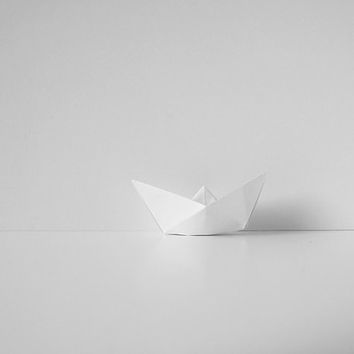
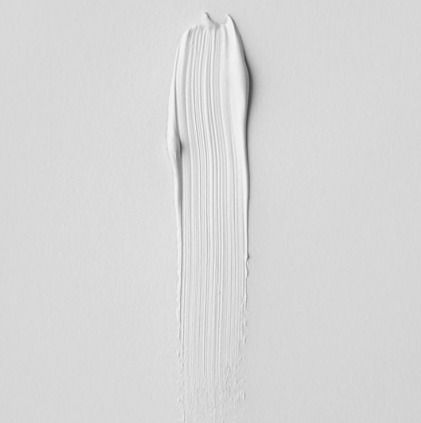
Simbolurile și semnele își au începuturile într-o idee care devine o IMAGINE și într-un final o realitate vie pentru creatorul ei. Acest lucru reprezintă INTEGRAREA. Este important de semnalat că nu lucrarea în sine reprezintă factorul integrator, ci ACTUL de simbolizare. Aducerea imaginii în conștient, acesta este procesul integrării. Imaginea realizată nici măcar nu trebuie să fie analizată sau discutată pentru a fi eficientă. Suntem atât de avizi în a fi CONECTAȚI, acceptați, văzuți, auziți, încât dezlănțuirea CREATIVITĂȚII pe parcursul procesului artistic vine la pachet cu extraordinar de multe bogății: vindecare, relaționare, transformare, recadrare; iar aceste aspecte sunt suficiente pentru a însoții clienții în procesul lor personal, exact acolo unde sunt ei în acel moment.
Chiar dacă unii clienți ajung să fie pacienți, este esențial ca aceștia să fie implicați în propriul lor proces de vindecare. Da, pacienții trebuie să se odihnească. Da, vindecarea are nevoie de timp, însă acest timp trebuie folosit cu iubire, încredere și implicare. De îndată ce pacienții acceptă să se angajeze în a face artă, aceștia devin participanți activi în procesul de vindecare. Nimeni nu poate fi pasiv și să realizeze artă. Arta necesită eforturi individuale. Dacă efortul fizic este peste măsura clientului, minimul de prezență este necesar.
Că tot veni vorba despre prezență, vom trece mai departe povestind despre art terapie, unde prezența joaca un rol esențial.
Definiția standard pe care Asociația Americană de Art Terapie o oferă este:
Art terapia, facilitată de către un art terapeut profesionist, susține eficient obiectivele personale și relaționale, precum și cele legate de comunitate ale clientului. Art terapia este folosită în îmbunătățirea funcțiilor cognitive și senzorio-motorii, întreține conștientizarea și stima de sine, cultivă diveritatea emoțională, facilitează înțelegeri profunde, încurajează abilitățile sociale, reduce și rezolvă conflictele și suferința și promovează schimbările sociale și ecologice.
CE ESTE ART TERAPIA PHRONETIK®?
Art terapia Phronetik® este o metodă blândă de a însoți un suflet în a transforma preocupările și fricile (transpuse sub forma imaginilor distorsionate) ,astfel încât să eliberăm fluxul vital și iubirea. Această formă de terapie are ca și fundament trei componente:
: : OMUL
: : ATITUDINEA UNEI COMUNIUNI ACTIVE (Prezența)
: : GENEZA FORMEI
Cu alte cuvinte modalitatea prin care noi luăm FORMĂ în această lume.
Phronetik® este comuniunea activă cu natura la toate nivelurile.” Art -terapia Phronetik® ne arată un drum pe care individul nu se mai confrunta cu sine, ci se compune cu sine, se regăsește și trăiește în aici şi acum, dând expresie propriei sale ființe și realizându- și propria natură.” Irmgard Maria Starke©
NATURA △ A SETTING-ULUI în art terapie
Imaginile create în cadrul sedințelor de art terapie reprezintă EXTERNALIZĂRI ale conținuturilor mentale ale clientului, privite, discutate și analizate în relația terapeutică; odată realizate, aceste CONȚINUTURI pot fi privite “din exterior” și de la o oarecare distanță (acest lucru fiind realizat într-un spațiu neamenințător, echilibrează trăirile interioare și oferă confort).
Symbols and signs have their beginning in an idea that becomes an IMAGE and finally a living reality for its creator. This thing represents the INTEGRATION. It is important to signalise that not the work in itself is the integrative factor but the ACT of symbolising. Bringing the image into the consciousness – this is the integrative process. The drawn image does not even have to be analised or discussed in order to be efficient. We are so eager to get connected, accepted, seen, heard, that unleashing the creativity alongside the art process comes together with an extraordinary diverse richness: healing, relating, transformation, reframing, and these aspects are sufficient to accompany the clients in their personal process, exactly where they find themselves at that moment.
Even if some clients become patients, it is essential that they should be involved in their own healing process. Yes, the patients need to rest. Yes, healing needs time, but this time needs to be used with love, trust and involvement. As soon as the patients accept to engage themselves in doing art, they become active participants in the healing process. Nobody can be passive and do art. Art requires individual efforts. It the physical effort is above the client’s capability, it requires the minimum of presence.
Speaking about presence, we will continue further on about the, art therapy, where presence plays a crucial role.
The standard definition provided by the American Art Therapy Association:
Art therapy, facilitated by a professional art therapist, effectively supports personal and relational treatment goals, as well as community concerns. Art therapy is used to improve cognitive and sensorimotor functions, foster self-esteem and self-awareness, cultivate emotional resilience, promote insight, enhance social skills, reduce and resolve conflicts and distress, and advance societal and ecological change (American Art Therapy Association, 2018).
WHAT IS PHRONETIK® ART THERAPY?
Phronetik® art therapy is a gentle method to accompany a soul in transforming its burdens and fears (transposed in the shape of distorted images) so that the vital flow and love can be freed. This therapy is founded on three components:
: : HUMAN BEING
: : ATTITUDE OF ACTIVE COMMUNION (PRESENCE)
: : GENESIS OF FORM
In other words, the modality through which we take FORM in this world.
Phronetik® is the active communion with nature on all levels. Phronetik® art therapy shows a way upon which the individual does not confront with himself, but composes himself with himself, finds himself and lives here and there, expressing his own being and realizing his own nature.” Irmgard Maria Starke©
THE NATURE OF THE SETTING in art therapy
The images created in the art therapy meetings represent EXTERNALISATIONS of the client’s mental content, seen, discussed and analised within the therapeutic relationship; once done, these CONTENTS can be seen „from the outside” and from a certain distance (done from a non-threatening space, this balances the inner experiences and provide for comfort).

Geneza FORMEI
Prin intermediul imaginilor mentale scenice materializate intr-o FORMA, emotiile si trairile pot fi
transformate in imagini cu o FORMA mai adaptata si orientata pe realitate (aspect specific art terapiei).
Fiecare componenta de mai sus are un rol important in VINDECAREA clientului.
Avem clientul (OM), care este insotit de catre un art terapeut (OM) prin prezenta (Aktive communio), intr-un process creativ, explorator care vine sa ii aduca clientului o intelegere mai profunda, o noua perspectiva, o apropriere catre o stare cat mai echilibrata (procesul de formare, alcatuire, intregire).
Aceasta stare de echilibru poate sa duca la vindecare, insa nu intotdeauna, iar atunci art terapia are rolul de a insotii bland procesul de autocunoastere atunci cand suferinta emotionala devine greu de tolerat, iar intrebarile existentiala nu intarzaie sa apara.
Imaginea clientului este IMAGINEA CLIENTULUI! Faptul ca acestia au reusit sa realizeze acesta lucrare le ofera inapoi puterea, vocea, gandul, ordinea, controlul!
Art terapia nu are nimic de a face cu interpretarea, ghicirea sau presupunerea terapeutului in legatura cu lucrarea clientului. Clientii isi exprima ganduri, emotii situatii de viata, toate sunt ascultate NECONDITIONAT si fara a fi judecate. Este timpul clientilor, lucrarea clientilor si viata acestora si sunt toate pe masa de lucru. Rolul terapeutului fiind acela de a fi martor la ACTUL de creatie si a accepta lucrarea clientului exact asa cum este la acel moment. Singura obligatie a terapeutului fiind starea de PREZENTA.
Ca si art terapeuti suntem responsabili de siguranta, mediul, materialele si suport nelimitat.
Art terapia ne învață limbajul imaginilor (interioare sau materiale).“O muncă imagistic-artistică prin care eu mă pot asigura de mine însumi, mă pot transforma, descoperii ceea ce sunt și vreau să devin, prin care imi descopăr unicitatea fără a mă simţi singur. Ea este redată într –un limbaj care are multiple posibilități și cuvinte: miscarea, imaginile interioare/imaginația, exprimarea prin forme în spațiu (sculptura, modelaj , desenul/grafica, imaginea video, pictura cu toate materialele ei şi multe altele. ACEST limbaj este de o minunata bogație. ” Irmgard Maria Starke©
*Materiale folosite in art terapie: lut (clay), acuarele, acrilice, tempera, creioane de ceara, oil pastel, creioane, carioci, markere, materiale media, creta, materiale din natura, foarfeci, lipici, pensule, bureti, stampile, diferite formate de hartie (A5 -A2 …), gramaje diferite, cartoane etc.
** Instrumentele folosite in art-terapia Phronetik® sunt: obiectivarea primara, procesul primar, explorarea Phronetik® a basmului, explorarea Phronetik® a imaginatiei, procesul structural, lucrul cu natura, lucrul cu visul, lucrul cu copilul interior.
Cum “funcționează” art terapia
Pe la mijlocul secolului 20 medicii au remarcat că indivizii care suferă de boli mintale s-au exprimat adesea în desene și alte opere de artă, ceea ce i-a determinat pe mulți să exploreze utilizarea artei ca strategie de vindecare. De atunci, arta a devenit o parte importantă a câmpului terapeutic și este folosită în unele tehnici de evaluare și tratament.
Un terapeut poate folosi o varietate de metode artistice, inclusiv desen, pictură, sculptură și colaj cu clienți, de la copii mici până la vârstnici. Clienții care au suferit traume emoționale, violență fizică, abuz în familie, anxietate, depresie și alte probleme psihologice pot sa inregistreze o calitate a vietii mai ridicata in urma procesului creativ si a exprimarii artistice.
Exista foarte multe materiale in literatura, pentru cei interesati, care descriu cum anume functioneaza art terapia, insa in mare parte ideea principala are de-a face cu FELUL in care SUNTEM cu clientii si rolul TRANSFORMATIV al cunoasterii castigat prin procesul creativ/artistic.
In loc de concluzii va invit la final de prezentare sa gasiti frumosul din jurul dvs, sa nu va mai luati atat de mult in serios si sa va intrebati:
Cine sunt eu dincolo de numele sau profesia mea?
Ce mai face sufletul meu?
Cand am facut ceva pentru sufletul meu?
Ce ma opreste?
Si cand am de gand sa incep?
Cateodata putem avea impresia ca e imposibil sa reusim sa miscam ceva, sau sa realizam vreo schimbare in viata noastra personala sau in relatia cu clientii, insa BUCURIA VIETII, CREATIVITATEA si EMOTIIA DE A FI COPIL din nou, pot avea o forta covarsitoare!
Genesis of FORM
By means of scenic mental images materialised into a FORM, emotions and experiences can be transformed into images with a FORM more adapted and focused on reality (specific feature of art therapy)
Each of the above components plays an important role in the client’s HEALING.
The client (HUMAN), accompanied by an art therapist (HUMAN) by means of presence (Aktive communion), in a creative process, as an explorer, who comes to bring the client closer to a deeper understanding, a new perspective, a closeness to a more balanced state (process of forming, shaping, wholeness, accomplishment) –
This state of balance can conduct to healing, but not always – in which case the art therapist has the role to gently accompany the self-knowing process whe the emotional burden becomes hard to deal with, and existential questioning do not delay in appearing.
The image done by the client is the IMAGE OF THE CLIENT! The fact that they succeeded in doing this work empowers them, gives them back their voice, thought, order, control!
The art therapy has nothing to do with the therapist interpreting, guessing or supposing about the client’s work. The clients express thoughts, emotions, life situations, all have to be UNCONDITIONALLY and unprejudiced listened to. It is the client’s time, their work and their life, and all of that is on the working table, the role of the therapist is to be a witness to the creative ACT and accept the client’s work such as it is at the moment. Therapist’ sole commitment is the state of PRESENCE.
As art therapist we are responsible for the client’s safety, environment, materials providing and unlimited support.
Art therapy teaches us the language of the images (inner or material) . “This is a imagist-artistic work, through which I can confirm myself, I can transform myself, discover who I am and what I want to become, through which I discover my uniqueness without feeling lonely. This is expressed in a language with multiple possibilities and words: the movement, the interior images/imagination, the expression through forms in a space (sculpture, modeling, drawing/graphic, video images, painting with all its materials and so many other form. This language is wonderfully rich”” Irmgard Maria Starke©
*Materials used in art therapy> clay, water paints, acrylics, tempera, wax pencils, oil pastel, crayons, markers, media materials, chalk, materials from nature, scissors, glue, brushes, sponges, stamps, paper sheets in various formats and weights, (A5 -A2 …), cards, etc.
** Tools used in Phronetik® art-therapy are: primary objectivation, primary process, Phronetik®-exploring of tales and imagination, structural process, work with nature, work with dreams, work with the inner child.
How it works?
Mid 20st century medics took note that patients suffering from mental health problems often expressed themselves in drawings and other art means, which determined many of them to explore the use of art as healing strategy. Ever since, art became an important part of the therapeutic realm and it is used in some evaluation and treatment techniques as well.
An art therapist can use a diversity of artistic means, including drawing, painting, sculpture and collage in his work with various clients, from children to older persons. Clients who suffered emotional trauma, physical violence, abused, anxieties, depression and other psychological problems can achieve a higher level of life quality, following the creative process and art expression.
For those interested there are many written materials describing how art therapy works, but the main idea is summarised as: HOW we ARE with our clients, and the TRANSFORMATIVE role of the knowledge acquired through the creative/art process.
Instead of conclusions, at the end of my presentation I kindly invite you to find out the beauty around you; don’t take yourself too seriously, and ask yourselves:
Who am I, besides my name, or my profession?
How is my soul doing?
When did I do something truly for my soul?
What stops me from doing it?
And when do I intend to start?
Sometimes we could have the impression it is impossible to succeed to move something, or to achieve a change in our personal life or in the relationships with our clients, but THE JOY OF LIFE, CREATIVITY, and the EMOTION to be a child again can hold an overwhelming power!
Despre art terapie, imagini, simboluri si semne am ales sa vorbesc la cea de-a treia Conferinta Est-Europeana de Sanatate Mintala. Timp de aproape un an am avut oportunitatea sa lucrez alaturi de o echipa minunata de medici psihiatrii pe sectia de Psihoze, condusa de catre doamna doctor Lavinia Duica. A fost o calatorie pe cat de provocatoare si de grea pe atat de speciala si bogata in experiente si oameni. Am intalnit un spatiu orientat catre om si suflet, cu timp si rabdare pentru pacienti si dorinta de formare a viitorilor medici. Felul in care rezidentii sunt insotiti in procesul de formare, sedintele de grup de lucru si supervizari, colaborarea dintre acestia au trezit foarte multa bucurie si recunostinta in interiorul meu.
Pe tot parcursul stagiului de practica m-am simtit sustinuta si in siguranta. Am legat prietenii si bineinteles ca ne-am bucurat impreuna de cateva reusite si insotiri valoroase. Prezentarea de mai sus reprezinta o parte din contributia mea la echipa de interventie, ceilalti colegi rezidenti au abordat teme importante precum: Group therapy in acute treatment settings Amine Ben Salem (Tunisia), Psychotropic medications – between myth and reality Vlad Drăgulescu (Romania), Opportunities to involve professionals in community psychiatry in Romania Monica Șipoș (Romania). https://mhasee.ro/
Pentru mine acest moment de apartenenta la un grup atat de divers de oameni care au un scop comun in a ajuta alti oameni in nevoie, a fost pur si simplu revelatoare. Experienta in spital mi-a dat speranta si dorinta totodata de a continua munca de pionierat (in Romania) in ceea ce priveste art terapia. ♡
Multumesc doamnei doctor Duica pentru oportunitatea de a FI acolo, si colegilor minunati (mi-ati ramas in suflet)!
*Despre simbolistica vor mai urma cateva articole, fiind o tema cuprinzatoare am simtit sa-mi petrec mai mult timp in a o aprofunda.
Discursuri si materiale care m-au insptirat:
Cursurile Art Terapie Phronetik
The Expressive Arts Activity Book: A Resource for Professionals by Wende Heath (Author), Suzanne Darley
https://www.youtube.com/watch?v=bPszGBfjuOY
Traducere limba engleza: Aurelia Roth
Credit imagini foto| google search: Lucy Campbell, picturi rupestre, diversitate, minimalism
